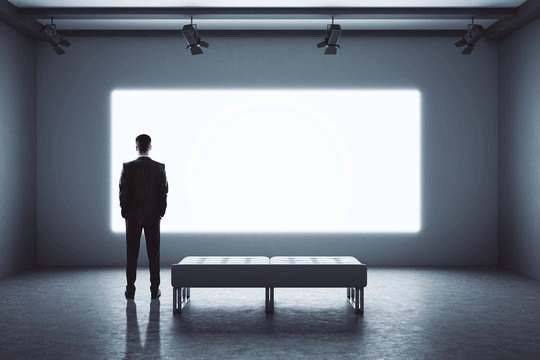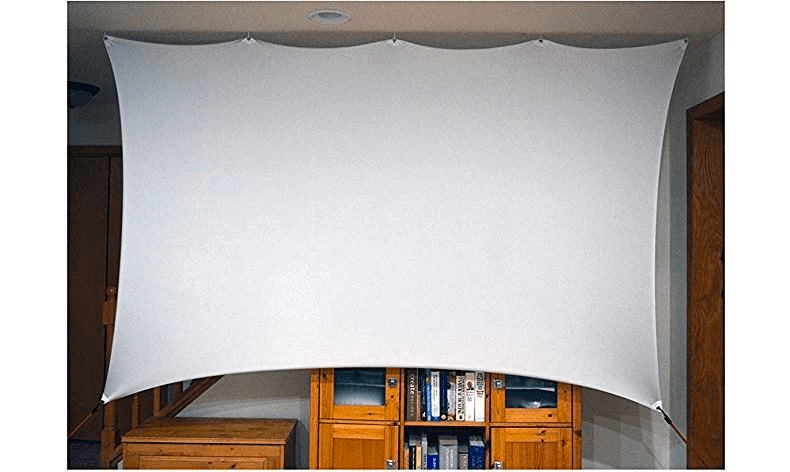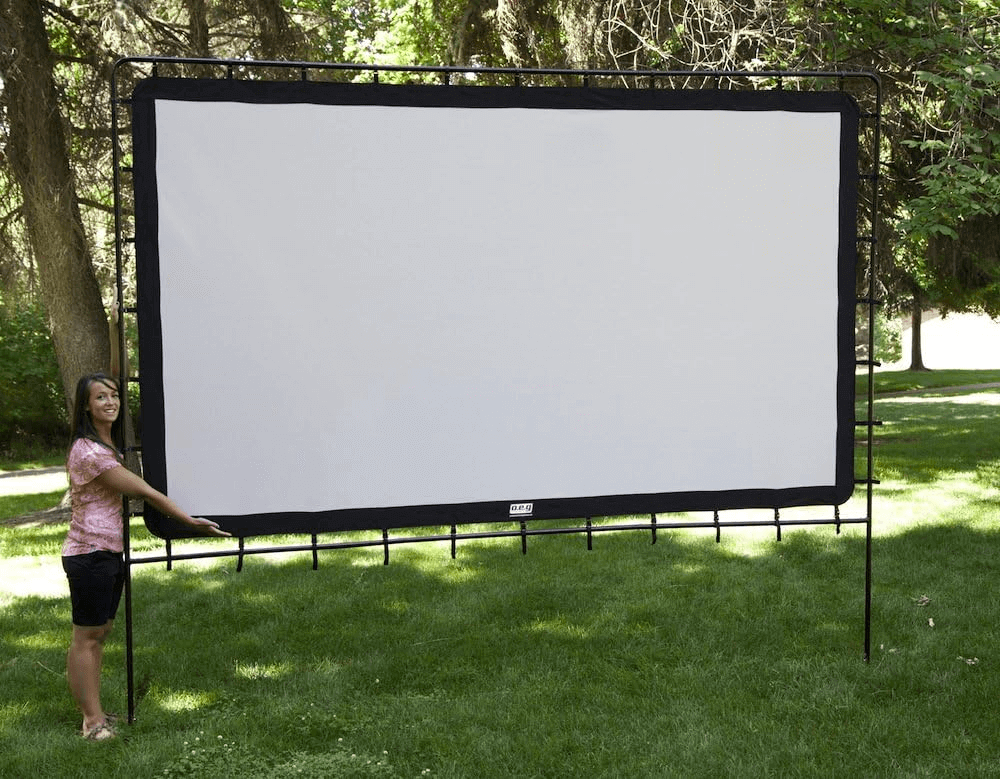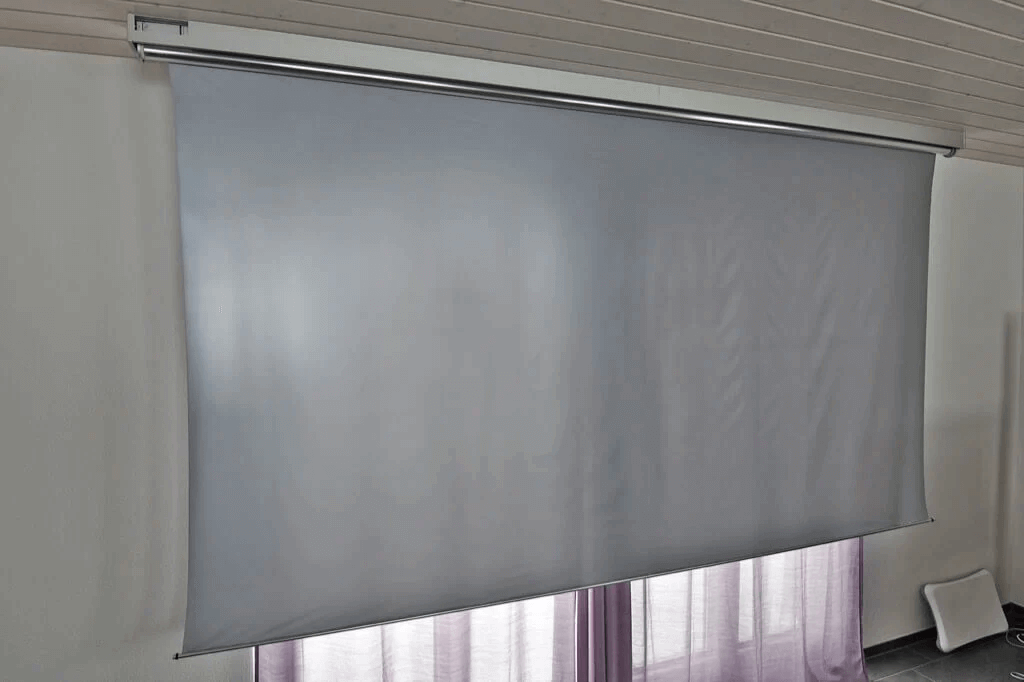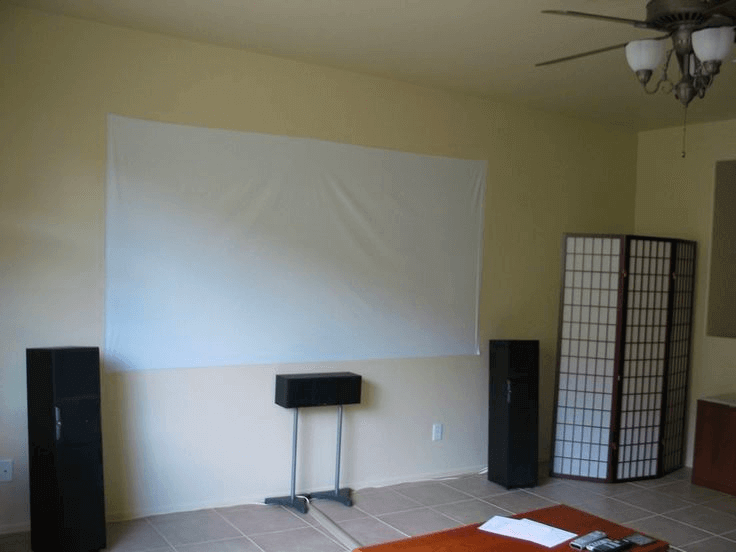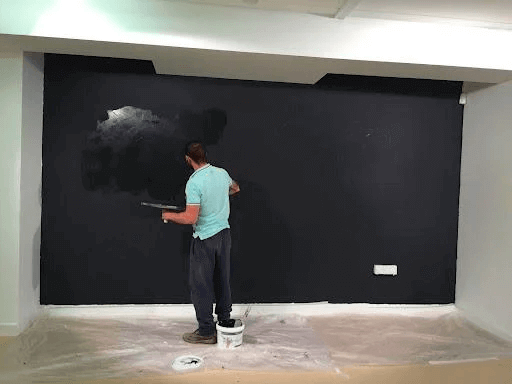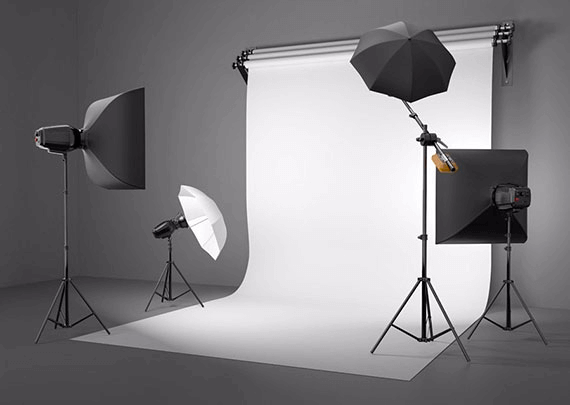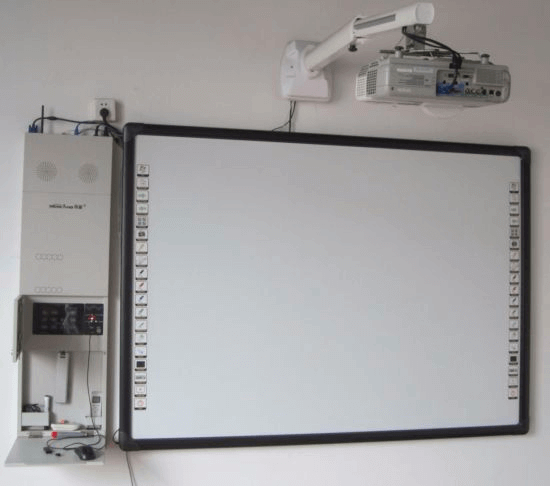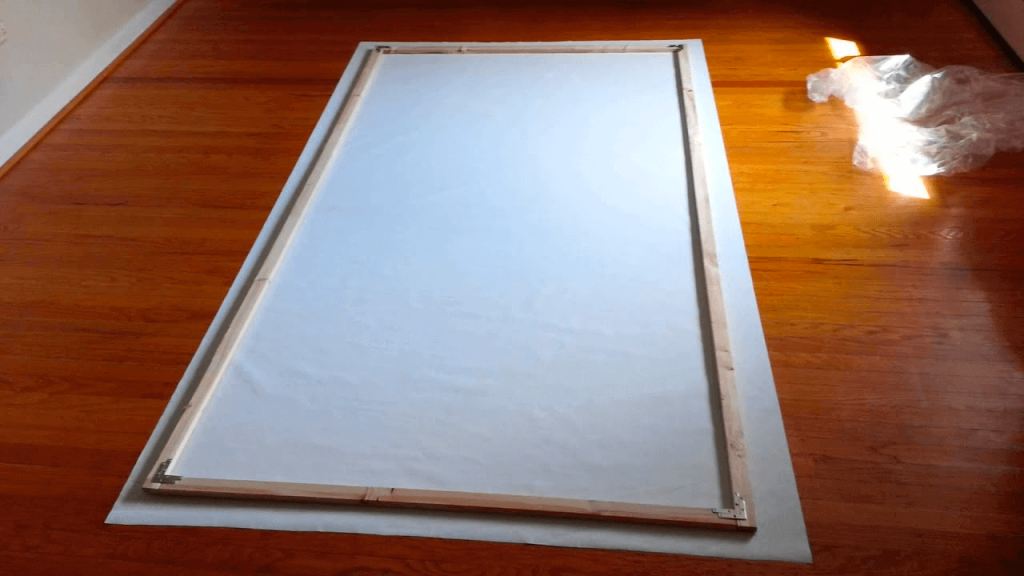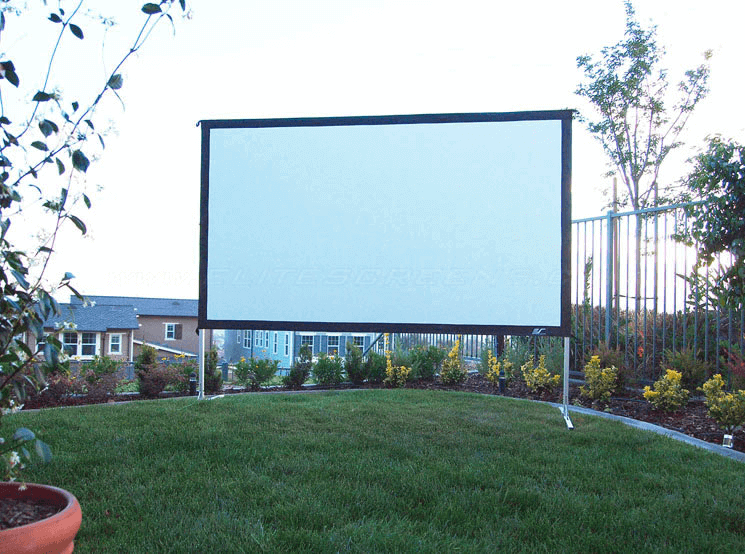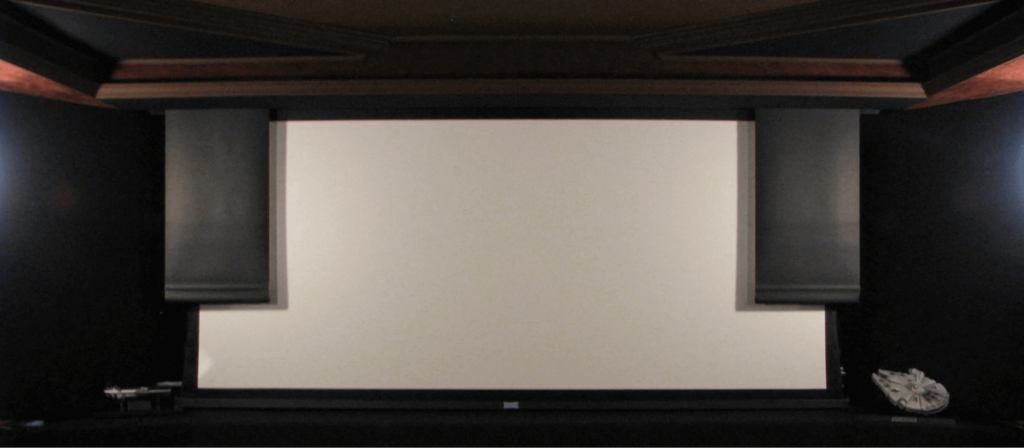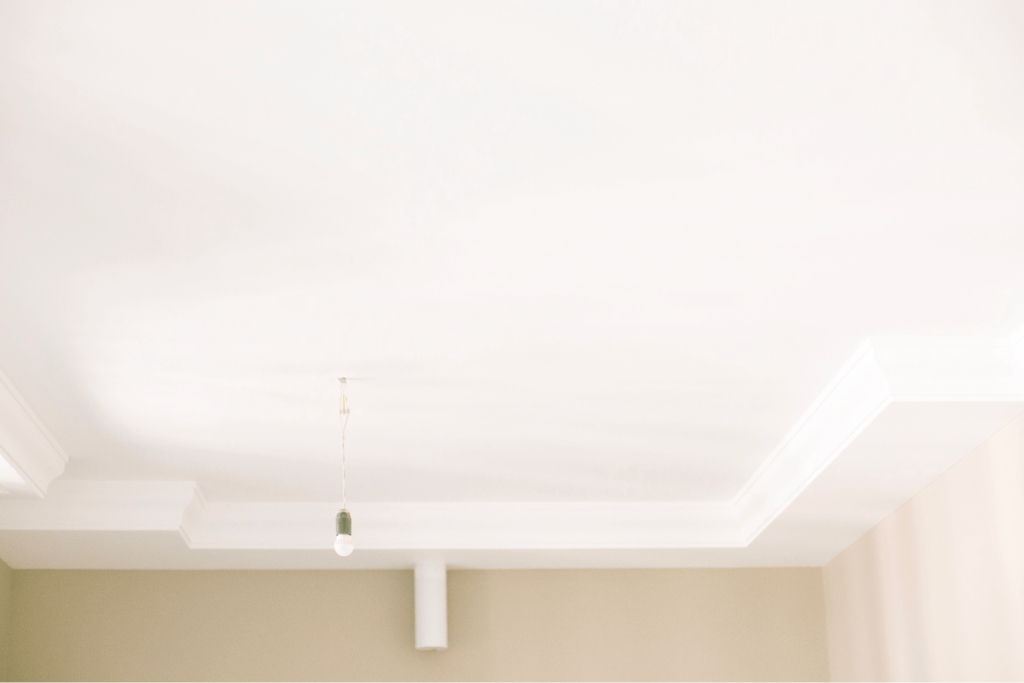With the rise in home theater systems, projector screen alternatives are becoming a hot topic. Whether you’re planning a movie night at home or setting up a presentation at work, traditional screens can be pricey. Luckily, there are numerous cost-effective and innovative alternatives available to use as a projector screen.
In this article, we aim to shed light on these unique solutions. We explore a variety of options from using your blank wall to more creative ones like wrapping paper or photography backdrops. Each of these screen idea alternatives has its own set of benefits and drawbacks for using them as indoor and outdoor projector screens.
We hope this guide will help you make an informed decision when choosing your next projector screen alternative. Read on to discover which solution best fits your needs and budget while delivering a superior viewing experience.
Remember, the right choice can turn your movie nights or presentations into memorable experiences without breaking the bank!
12 Best Projector Screen Alternatives
Choosing the right projector screen alternative can greatly enhance your viewing experience. Whether it’s for a professional setting, a home theater, or an outdoor movie night, these alternatives can deliver excellent results without hurting your pocket. Let’s dig into the top 12 best projector screen alternatives.
1. Blank Wall as a Projector Screen
The most common and cost-effective alternative to a projector screen is a plain, white wall. If your wall is smooth and painted in a non-reflective white paint, it can serve as an excellent surface for projecting images.
Consider the location of your wall. The wall should be in a well-lit area, but not in direct sunlight, which can wash out the projected image. Also, ensure the wall is clean and free from marks or imperfections that could distort the projection.
The key advantage of this method is that it requires no additional setup. However, the quality of the projection will depend on the condition and color of your wall. Light matte paint-colored walls work well to give you the best picture quality during projections.
2. Fabric Sheet
Using a sheet or a white fabric bedsheet can act as a DIY projector screen. This is a practical and portable alternative, especially for impromptu presentations or movie nights.
Choose a sheet as a projector screen that is wrinkle-free and has little to no texture. The smoother the sheet, the clearer your projection will be. Attach the sheet to a frame or hang it on a wall, ensuring it’s stretched tight to avoid any creases.
While this method of making a homemade projector screen is cost-effective and easy to set up, the quality of the image projected may not be as high as that of a commercial projector screen. It’s best suited for a cheap DIY projector screen alternative.
3. Wrapping Paper
Wrapping paper as a projector screen may not be the first thing you consider when thinking about projector screen alternatives, but it can be surprisingly effective. Look for large rolls of white or light-colored wrapping paper.
The glossy side of wrapping paper can enhance color saturation and contrast in your projected image. However, be aware that any patterns or textures on the paper could interfere with the clarity of the projection.
This alternative to the DIY screen is inexpensive and readily available but may not be as durable or long-lasting as other options.
4. Window Shades
Window shades are another innovative makeshift projector screen alternative. Particularly, pull-down window shades that are smooth and white can work well.
These shades are designed to block light, which can enhance the quality of your projection. Additionally, they’re easy to pull down and roll up, making them a convenient and space-saving solution.
Ensure the shade is clean and free from damage to achieve the best viewing experience. While this is a practical solution, it may not offer the same level of image quality as a dedicated projector screen.
5. Blackout Cloth
A blackout cloth is a type of fabric specifically designed to block light. This makes it a great alternative to a traditional projector screen.
Blackout cloth provides high color accuracy and sharpness due to its light-absorbing properties. It’s typically thicker than regular fabric sheets, which helps prevent light penetration and improves image quality.
While a blackout cloth can deliver high-quality projections, it’s slightly more expensive than regular fabric sheets or bed sheets but still relatively cheap compared to the most expensive projector screens.
6. Projector Screen Paint
Projector paint is a type of paint specifically designed to enhance the projection quality on walls or other surfaces. It’s an excellent choice if you’re looking for a more permanent video projector screen alternative.
As a projector screen material, this projector screen paint can turn any smooth surface into a projector screen, providing high-quality visuals with vibrant colors. However, it requires careful application to ensure the surface is smooth and free from imperfections.
While projector paint offers decent picture quality projections, it’s more expensive than most other alternatives listed here, and it’s a more permanent solution.
7. Photography Backdrop
A photography backdrop can double as an effective projector screen. These backdrops are typically larger and more durable than fabric sheets or bed sheets.
Choose a white or light-colored backdrop for the best results. The material used in these backdrops is often wrinkle-resistant, which ensures a smoother surface for projection.
While photography backdrops provide a larger viewing area and are generally more durable than fabric sheets, they can be slightly more expensive.
8. Whiteboard
If you’re in an office or classroom setting, a whiteboard can serve as an efficient projector screen. Whiteboards are smooth and reflective, which can enhance the brightness and contrast of your projected image.
Ensure the whiteboard is clean and free from scratches or marks that could distort the image. While this method is ideal for presentations, it’s not the best option for watching movies or videos as the image quality may not be as high.
This solution is practical in a professional setting but may not be suitable for home use due to the reflective nature of whiteboards.
9. Poster Board or Foam Board
Poster boards or foam display boards can be used as a portable and cheap projector screen alternative. They are lightweight and available in large sizes. Choose a white or light-colored board for the best results.
These boards can be easily mounted or propped up against a wall. However, they may not provide the same level of image quality as some other alternatives due to their smaller size and potential for surface imperfections still they can be considered as DIY projects of cheap projector screen alternatives to traditional screens.
10. Inflatable Screens
Inflatable screens are an excellent outdoor projector screen alternative for outdoor movie nights or large gatherings. These screens are easy to set up, portable, and come in various sizes to fit your specific needs.
The advantage of inflatable screens is their size and portability. They can be deflated for easy storage and transportation. However, they can be susceptible to wind and other weather conditions, so it’s important to secure them properly during use.
11. Projection Screen Vinyl
Projection screen vinyl is a type of material specifically designed for projectors. By using this alternative, you can get the best image quality with vibrant colors and sharpness.
This DIY option of making a professional screen is flexible, easy to install, and can be cut to any size to use for a projector screen, making it a versatile choice. However, it’s more expensive than some other alternative projector screen alternatives but offers superior image quality.
12. Ceiling
For those with limited wall space or looking for a unique setup, the ceiling can serve as an innovative projector screen alternative. This could be ideal for creating a unique home theater experience or for spaces where traditional setups are not feasible.
To use a ceiling as a projector screen, you’ll need a projector capable of ceiling projection. The ceiling should be smooth and painted in a light, non-reflective color to enhance the image quality.
Key Considerations When Selecting Projector Screen Alternatives
When exploring the world of projector screen alternatives, it’s crucial to keep a few key factors in mind. These considerations will ensure you make an informed decision that meets your specific needs while providing an optimal viewing experience.
Surface Smoothness
The smoothness of the surface you’re projecting onto significantly affects the clarity of the image. A smoother surface will result in a clearer and more focused projection. This is particularly important when using alternatives such as a blank wall, white sheets, or whiteboards.
Color of the Surface
The color of the projection surface can impact the brightness and contrast of the displayed image. Light-colored projector surfaces, particularly flat or matte paint ones, are typically the best choice as they reflect more light and help to enhance the image’s visibility.
Ambient Lighting
Consider the lighting conditions in the room where you plan to use the projector. A darker room will provide a more vibrant and brighter image. If you can’t control the room’s lighting, opt for alternatives like blackout cloth or projector paint that can help improve image quality in brighter settings.
Size of the Projection Surface
The size of your projection surface will depend on your specific needs. If you’re setting up a home theater or planning to project in a large space, a bigger surface like a photography backdrop or large fabric sheet would be ideal.
Portability and Ease of Setup
If you need a mobile setup, consider how easy it is to move and install your chosen alternative. Fabric sheet screens, for example, are lightweight and easy to set up, making them perfect for outdoor movie nights or temporary setups.
Durability
Consider how long-lasting your chosen alternative is. If you plan to use it regularly, opt for more durable options like projector paint or photography backdrops.
Remember, there isn’t a one-size-fits-all solution when it comes to projector screen alternatives. The best choice for you will depend on your specific circumstances, preferences, and budget. Consider all these factors before making your decision to ensure the best projection experience possible.
Understanding the Drawbacks of Projector Screen Alternatives
While projector screen alternatives offer flexibility and cost savings, it’s important to acknowledge that they also come with certain drawbacks. Understanding these challenges can help make an informed decision and set realistic expectations.
Quality of Projection
One of the main disadvantages of using projector screen alternatives is that they may not offer the same quality of projection as an actual projector screen. Factors like surface texture, color, and material can significantly impact image clarity, brightness, and contrast.
Durability
Projector screen alternatives like fabric sheets, wrapping paper, or foam boards may not be as durable for indoor and outdoor use as expensive screens. They could be susceptible to damage from elements like wind, moisture, or regular wear and tear.
Setup Time
Some projector screen alternatives can require significant setup time. Whether it’s stretching a fabric sheet onto a frame, painting a wall with projector paint, or setting up an inflatable screen, these are not instant solutions and require some degree of effort and preparation.
Limitations in Size
While you can choose cheap alternatives that fit your space, you might be limited in terms of the size of the screen area. Especially with options like a whiteboard. poster board or cardboard as a projector screen, you might not achieve the large-scale and quality viewing experience in terms of screen dimensions and styles that a dedicated large projector screen offers.
Environmental Factors
Projector screen alternatives might also be more susceptible to environmental factors. For instance, ambient light can wash out the image on a lighter surface, while a gust of wind could disrupt an outdoor setup using a fabric sheet or inflatable screen.
While projector screen alternatives have their challenges, they still offer viable options for those willing to compromise slightly on image quality for the sake of cost savings, convenience, or unique viewing experiences. As always, understanding your specific needs and constraints will guide you in choosing the best solution.
Frequently Asked Questions (FAQ’s)
As we search into the realm of the best cheap projector screen alternatives, it’s natural to have a few queries or concerns. To help you navigate these waters, we’ve curated a list of frequently asked questions that touch on key aspects of these innovative solutions.
Q1: Can I use a blank wall as a projector screen?
Indeed, a wall can serve as an effective projector screen. Ensure it is smooth and painted in a light, non-reflective color for optimal image quality. Also, keep the wall clean and free from any marks or blemishes that could distort the projected image.
Q2: How can I improve the image quality on a fabric sheet projector screen?
Improving the image quality on a fabric sheet involves ensuring it is tightly stretched and free from wrinkles. A fabric with minimal texture will yield clearer projections. Also, lighter-colored sheets tend to reflect more light, enhancing the overall projection.
Q3: Is projector paint worth the investment?
Projector paint can be a valuable investment for those seeking a more permanent projector screen or real screen alternative. Choosing the best projector screen paint can enhance visual quality with vibrant colors. However, its application demands precision for a smooth surface and it leans towards the pricier side compared to other alternatives.
Q4: What is the best color for a projector screen alternative?
White or light-colored surfaces are ideal for projector screen alternatives. These colors reflect more light, amplifying the brightness and contrast of the projected image.
Q5: Can I use a whiteboard as a projector screen?
Yes, a whiteboard can double up as a projector screen, particularly for presentations in an office or classroom setting. However, ensure it’s clean and devoid of scratches or marks for best results. The reflective nature of whiteboards may not provide the best quality for watching movies or videos.
Conclusion
There are numerous types of screen alternatives available that cater to different needs and budgets. Whether you choose a blank wall, fabric sheet, wrapping paper, window shades, blackout cloth, projector paint, photography backdrop, or whiteboard, each one comes with its own set of advantages and drawbacks.
Remember, the best portable projector screen alternative for you will depend on your specific needs, the environment you’re in, and your budget. Consider all these factors before making a decision to ensure you get the most out of your projection experience through a perfect screen.

